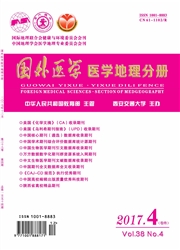

 中文摘要:
中文摘要:
目的应用生物信息学分析软件预测细粒棘球蚴重组抗原P-29氨基酸序列的结构与功能。方珐应用NCBI、Expasy等在线生物信息学网站及DNAstar、Rasmol等软件包分析P-29与其他物种的同源序列,进行多序列同源比对;预测二级结构、三级结构;预测主要抗原表位等。结果细粒棘球绦虫重组抗原P-29与其他物种的同源性比对结果表明与多房棘球绦虫同源性最高为97%,依次为日本血吸虫73.9%,冈比亚按蚊70.5%,埃及伊蚊66.2%;预测该蛋白分子质量约为27ku,PI为5.69,具有1个跨膜区,位于212—215,8个抗原表位,其结构域位于5-238位。结论生物信息学预测结果提示该可能是免疫诊断、药物作用及疫苗潜在的靶分子。
 英文摘要:
英文摘要:
Objective To predict the structure and function of recombinant antigen P-29 of Echinococcus granulous (rEg. P-29) using bioinformatics method. Methods By online analysis at bioinformatics websites such as NCB[(http://www. nibi. nlm. nih. gov/)and Expasy (http..//cn. expasy, org/), and employing software packages such as DNAstar and Rasmolto do multi-sequence homological alignment, secondary structure and tertiary structure, antigenic epitope analysis, etc. Results Similarity of rEg. P-29 compared to Echinococcus multilocularis, Schistosoma japonicum, Anopheles Gambia and Aedes aegypti was 97%, 73.96%, 70.5%, 66.2% respectively. Analysis of the predicted protein indicated a molecular mass of 27 ku, PI was 5.69, one transmembrane region, function sites and eight antigen epitope were found. Conclusion rEg. P-29 might be a potential molecular target for immunodiagnosis, anti-hydatid drug and vaccine development.
 同期刊论文项目
同期刊论文项目
 同项目期刊论文
同项目期刊论文
 期刊信息
期刊信息
